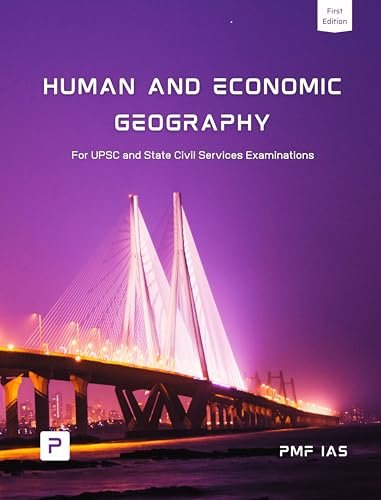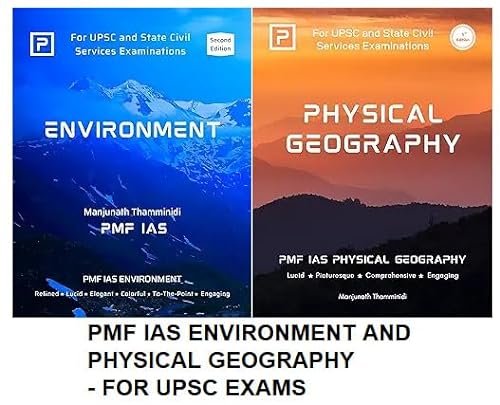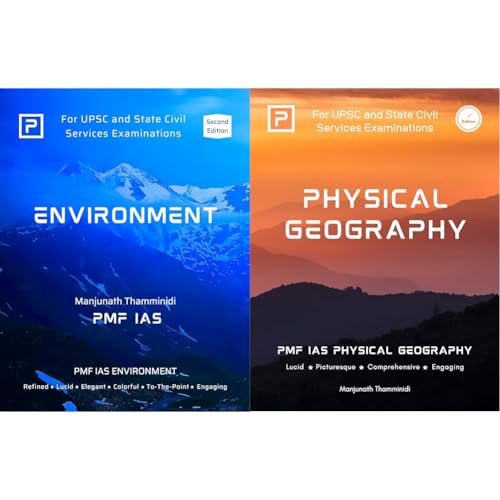
May 02 2024 Prelims Practice Questions (PPQs)
Subscribe to Never Miss an Important Update! Assured Discounts on New Products!
Must Join PMF IAS Telegram Channel & PMF IAS History Telegram Channel
- These Prelims Practice Questions (PPQs) are based on PMF IAS Daily Current Affairs.
- The daily current affairs are uploaded every day by 8 PM. You can read the Daily Current Affairs from here.
- Subscribers of the “Current Affairs” course can Download Daily Current Affairs in PDF/DOC from here.
[Quiz] Daily Prelims Practice Questions (PPQs) – May 02 2024
0 of 7 questions completed
Questions:
- 1
- 2
- 3
- 4
- 5
- 6
- 7
Information
These MCQs are based on PMF IAS Daily Current Affairs. The daily current affairs are uploaded every day by 8 PM. You can read the Daily Current Affairs from here. Subscribers of the “Current Affairs” course can Download Daily Current Affairs in PDF/DOC from here.
You have already completed the Test before. Hence you can not start it again.
Test is loading...
You must sign in or sign up to start the Test.
You have to finish following quiz, to start this Test:
Your results are here!! for" [Quiz] Daily Prelims Practice Questions (PPQs) – May 02 2024 "
0 of 7 questions answered correctly
Your time:
Time has elapsed
Your Final Score is : 0
You have attempted : 0
Number of Correct Questions : 0 and scored 0
Number of Incorrect Questions : 0 and Negative marks 0
| Average score |
|
| Your score |
|
-
Not categorized
You have attempted: 0
Number of Correct Questions: 0 and scored 0
Number of Incorrect Questions: 0 and Negative marks 0
| Pos. | Name | Entered on | Points | Result |
|---|---|---|---|---|
| Table is loading | ||||
| No data available | ||||
- 1
- 2
- 3
- 4
- 5
- 6
- 7
- Answered
- Review
-
Question 1 of 7
1. Question
Q1. {Governance – Laws} Consider the following statements about the Animal Welfare Board of India:
- The Animal Welfare Board of India, headquartered in New Delhi, was established under the Animal Welfare Board Act of 1960.
- Serving as a statutory advisory body, the Animal Welfare Board of India provides recommendations exclusively to the Ministry of Environment, Forest and Climate Change regarding animal welfare laws and policies.
Which of the above statement(s) is/are correct?
Correct
Explanation
Statement 1 is incorrect
- The Animal Welfare Board of India (AWBI) was established under the Animal Welfare Board Act of 1960.
- The act was enacted to prevent the infliction of unnecessary pain or suffering on animals and to ameliorate their condition, and it established the Animal Welfare Board of India as the authority to oversee animal welfare issues in the country.
- Additionally, the headquarters of AWBI is located in Chennai, Tamil Nadu.
Statement 2 is incorrect
- The AWBI does serve as a statutory advisory body, but its role extends beyond providing recommendations solely to the MoEFCC.
- While the MoEFCC is one of the primary stakeholders, the AWBI advises various governmental bodies and departments at both the central and state levels on matters related to animal welfare laws, policies, and implementation.
- Additionally, the AWBI engages in advocacy efforts, collaborates with other organizations, and plays a significant role in formulating and implementing animal welfare policies across different sectors beyond just environmental and forest-related matters.
Answer: (d) Neither 1 nor 2; Difficulty Level: Medium
Incorrect
Explanation
Statement 1 is incorrect
- The Animal Welfare Board of India (AWBI) was established under the Animal Welfare Board Act of 1960.
- The act was enacted to prevent the infliction of unnecessary pain or suffering on animals and to ameliorate their condition, and it established the Animal Welfare Board of India as the authority to oversee animal welfare issues in the country.
- Additionally, the headquarters of AWBI is located in Chennai, Tamil Nadu.
Statement 2 is incorrect
- The AWBI does serve as a statutory advisory body, but its role extends beyond providing recommendations solely to the MoEFCC.
- While the MoEFCC is one of the primary stakeholders, the AWBI advises various governmental bodies and departments at both the central and state levels on matters related to animal welfare laws, policies, and implementation.
- Additionally, the AWBI engages in advocacy efforts, collaborates with other organizations, and plays a significant role in formulating and implementing animal welfare policies across different sectors beyond just environmental and forest-related matters.
Answer: (d) Neither 1 nor 2; Difficulty Level: Medium
Unattempted
Explanation
Statement 1 is incorrect
- The Animal Welfare Board of India (AWBI) was established under the Animal Welfare Board Act of 1960.
- The act was enacted to prevent the infliction of unnecessary pain or suffering on animals and to ameliorate their condition, and it established the Animal Welfare Board of India as the authority to oversee animal welfare issues in the country.
- Additionally, the headquarters of AWBI is located in Chennai, Tamil Nadu.
Statement 2 is incorrect
- The AWBI does serve as a statutory advisory body, but its role extends beyond providing recommendations solely to the MoEFCC.
- While the MoEFCC is one of the primary stakeholders, the AWBI advises various governmental bodies and departments at both the central and state levels on matters related to animal welfare laws, policies, and implementation.
- Additionally, the AWBI engages in advocacy efforts, collaborates with other organizations, and plays a significant role in formulating and implementing animal welfare policies across different sectors beyond just environmental and forest-related matters.
Answer: (d) Neither 1 nor 2; Difficulty Level: Medium
-
Question 2 of 7
2. Question
Q2. {Governance – Laws} Consider the following statements about the Street Vendors (SV) (Protection of Livelihood and Regulation of Street Vending) Act, 2014:
- The SV Act, 2014, mandates the formation of Town Vending Committees (TVCs) at both the municipal and local authority levels.
- Street vendors are required to obtain vending certificates from the Town Vending Committees to operate legally.
- It provides that the States/ULBs survey to identify SVs at least once every year.
How many of the above statement(s) is/are correct?
Correct
Explanation
Statement 1 is correct
- The SV Act, 2014, requires the establishment of Town Vending Committees (TVCs) at both the municipal and local authority levels.
- These committees play a crucial role in overseeing the regulation of street vending activities.
- They are responsible for tasks such as issuing vending certificates, demarcating vending zones, and resolving disputes related to street vending.
- The existence of these committees ensures that street vending activities are carried out in accordance with the provisions of the Act and local regulations.
Statement 2 is correct
- According to the SV Act, street vendors are required to obtain vending certificates from the Town Vending Committees in order to operate legally.
- These certificates serve as official authorization for street vendors to carry out their vending activities within designated vending zones.
- By obtaining these certificates, street vendors comply with the regulations outlined in the Act and ensure that their activities are conducted lawfully.
Statement 3 is incorrect
- It provides that the States/ULBs survey to identify SVs at least once every five years.
Answer: (b) Only two; Difficulty Level: Medium
Incorrect
Explanation
Statement 1 is correct
- The SV Act, 2014, requires the establishment of Town Vending Committees (TVCs) at both the municipal and local authority levels.
- These committees play a crucial role in overseeing the regulation of street vending activities.
- They are responsible for tasks such as issuing vending certificates, demarcating vending zones, and resolving disputes related to street vending.
- The existence of these committees ensures that street vending activities are carried out in accordance with the provisions of the Act and local regulations.
Statement 2 is correct
- According to the SV Act, street vendors are required to obtain vending certificates from the Town Vending Committees in order to operate legally.
- These certificates serve as official authorization for street vendors to carry out their vending activities within designated vending zones.
- By obtaining these certificates, street vendors comply with the regulations outlined in the Act and ensure that their activities are conducted lawfully.
Statement 3 is incorrect
- It provides that the States/ULBs survey to identify SVs at least once every five years.
Answer: (b) Only two; Difficulty Level: Medium
Unattempted
Explanation
Statement 1 is correct
- The SV Act, 2014, requires the establishment of Town Vending Committees (TVCs) at both the municipal and local authority levels.
- These committees play a crucial role in overseeing the regulation of street vending activities.
- They are responsible for tasks such as issuing vending certificates, demarcating vending zones, and resolving disputes related to street vending.
- The existence of these committees ensures that street vending activities are carried out in accordance with the provisions of the Act and local regulations.
Statement 2 is correct
- According to the SV Act, street vendors are required to obtain vending certificates from the Town Vending Committees in order to operate legally.
- These certificates serve as official authorization for street vendors to carry out their vending activities within designated vending zones.
- By obtaining these certificates, street vendors comply with the regulations outlined in the Act and ensure that their activities are conducted lawfully.
Statement 3 is incorrect
- It provides that the States/ULBs survey to identify SVs at least once every five years.
Answer: (b) Only two; Difficulty Level: Medium
-
Question 3 of 7
3. Question
Q3. {Polity – IC – FRs} Consider the following statements:
- The Indian Constitution guarantees the right to vote for all Indian citizens, including prisoners, without any restrictions.
- According to the Representation of the People Act, 1951, individuals convicted of certain criminal offenses are disqualified from contesting elections and holding public offices.
Which of the above statement(s) is/are correct?
Correct
Explanation
Statement 1 is incorrect
- It’s not the Indian Constitution itself that directly guarantees the right to vote for all Indian citizens, including Prisoners.
- Instead, it’s the Representation of the People Act, 1951, which is a statutory law passed by the Indian Parliament.
- While the Indian Constitution does provide the fundamental framework for governance, including the right to vote, specific details about elections, including eligibility criteria and disqualifications, are outlined in statutory laws like the Representation of the People Act.
- Also, while the Indian Constitution lays down the broad principles of democracy and citizenship, it’s the Representation of the People Act that specifies the details of who can vote and under what circumstances.
- The Representation of the People Act, 1951, does not provide an unconditional right to vote for all Indian citizens, including prisoners.
- Instead, it imposes certain restrictions on who can exercise the right to vote.
- Specifically, Section 62(5) of the Act disqualifies certain categories of individuals from voting, including those who are declared mentally unsound and those who are serving a prison sentence due to conviction for certain criminal offenses.
Statement 2 is correct
- The Representation of the People Act, 1951, indeed disqualifies individuals convicted of certain criminal offenses from contesting elections and holding public office.
- Section 8 of the Act specifies various grounds for disqualification, including conviction for offenses listed in the Indian Penal Code (IPC) or other specified laws.
- These disqualifications apply to both prisoners and non-prisoners who have been convicted of qualifying offenses.
Answer: (b) 2 only; Difficulty Level: Medium
Incorrect
Explanation
Statement 1 is incorrect
- It’s not the Indian Constitution itself that directly guarantees the right to vote for all Indian citizens, including Prisoners.
- Instead, it’s the Representation of the People Act, 1951, which is a statutory law passed by the Indian Parliament.
- While the Indian Constitution does provide the fundamental framework for governance, including the right to vote, specific details about elections, including eligibility criteria and disqualifications, are outlined in statutory laws like the Representation of the People Act.
- Also, while the Indian Constitution lays down the broad principles of democracy and citizenship, it’s the Representation of the People Act that specifies the details of who can vote and under what circumstances.
- The Representation of the People Act, 1951, does not provide an unconditional right to vote for all Indian citizens, including prisoners.
- Instead, it imposes certain restrictions on who can exercise the right to vote.
- Specifically, Section 62(5) of the Act disqualifies certain categories of individuals from voting, including those who are declared mentally unsound and those who are serving a prison sentence due to conviction for certain criminal offenses.
Statement 2 is correct
- The Representation of the People Act, 1951, indeed disqualifies individuals convicted of certain criminal offenses from contesting elections and holding public office.
- Section 8 of the Act specifies various grounds for disqualification, including conviction for offenses listed in the Indian Penal Code (IPC) or other specified laws.
- These disqualifications apply to both prisoners and non-prisoners who have been convicted of qualifying offenses.
Answer: (b) 2 only; Difficulty Level: Medium
Unattempted
Explanation
Statement 1 is incorrect
- It’s not the Indian Constitution itself that directly guarantees the right to vote for all Indian citizens, including Prisoners.
- Instead, it’s the Representation of the People Act, 1951, which is a statutory law passed by the Indian Parliament.
- While the Indian Constitution does provide the fundamental framework for governance, including the right to vote, specific details about elections, including eligibility criteria and disqualifications, are outlined in statutory laws like the Representation of the People Act.
- Also, while the Indian Constitution lays down the broad principles of democracy and citizenship, it’s the Representation of the People Act that specifies the details of who can vote and under what circumstances.
- The Representation of the People Act, 1951, does not provide an unconditional right to vote for all Indian citizens, including prisoners.
- Instead, it imposes certain restrictions on who can exercise the right to vote.
- Specifically, Section 62(5) of the Act disqualifies certain categories of individuals from voting, including those who are declared mentally unsound and those who are serving a prison sentence due to conviction for certain criminal offenses.
Statement 2 is correct
- The Representation of the People Act, 1951, indeed disqualifies individuals convicted of certain criminal offenses from contesting elections and holding public office.
- Section 8 of the Act specifies various grounds for disqualification, including conviction for offenses listed in the Indian Penal Code (IPC) or other specified laws.
- These disqualifications apply to both prisoners and non-prisoners who have been convicted of qualifying offenses.
Answer: (b) 2 only; Difficulty Level: Medium
-
Question 4 of 7
4. Question
Q4. {Envi – Plastic Pollution} Consider the following statements:
- Bacillus subtilis is a strict anaerobe that is commonly used as a model organism in scientific research due to its ability to form endospores.
- These spores when combined with polyurethane, also decreases the toughness of the plastic and improve its useful lifetime, making the plastic safer for environment.
Which of the above statement(s) is/are not correct?
Correct
Explanation
Statement 1 is incorrect
- Bacillus subtilis is widely used as a model organism in scientific research, particularly in molecular biology and microbiology, due to its well-characterized genetics, ease of cultivation, and ability to form highly resistant endospores.
- Bacillus subtilis is a facultative anaerobe, meaning it can survive and grow in both the presence and absence of oxygen.
- It is capable of aerobic respiration when oxygen is available and can switch to fermentation or anaerobic respiration in oxygen-deprived environments.
Statement 2 is incorrect
- Scientists have developed a “self-digesting plastic” that can reduce plastic pollution.
- Polyurethane can be digested by incorporating spores of plastic-eating bacteria.
- The spores remain dormant during the plastic’s useful lifetime but spring back to life and start digesting the product when exposed to nutrients in the compost.
- These spores also increase the toughness of the plastic and improve its useful lifetime.
- The spores of bacteria added to the plastic are Bacillus subtilis.
- This bacteria must be genetically engineered to withstand the very high temperatures needed to make plastic.
Answer: (c) Both 1 and 2; Difficulty Level: Medium
Incorrect
Explanation
Statement 1 is incorrect
- Bacillus subtilis is widely used as a model organism in scientific research, particularly in molecular biology and microbiology, due to its well-characterized genetics, ease of cultivation, and ability to form highly resistant endospores.
- Bacillus subtilis is a facultative anaerobe, meaning it can survive and grow in both the presence and absence of oxygen.
- It is capable of aerobic respiration when oxygen is available and can switch to fermentation or anaerobic respiration in oxygen-deprived environments.
Statement 2 is incorrect
- Scientists have developed a “self-digesting plastic” that can reduce plastic pollution.
- Polyurethane can be digested by incorporating spores of plastic-eating bacteria.
- The spores remain dormant during the plastic’s useful lifetime but spring back to life and start digesting the product when exposed to nutrients in the compost.
- These spores also increase the toughness of the plastic and improve its useful lifetime.
- The spores of bacteria added to the plastic are Bacillus subtilis.
- This bacteria must be genetically engineered to withstand the very high temperatures needed to make plastic.
Answer: (c) Both 1 and 2; Difficulty Level: Medium
Unattempted
Explanation
Statement 1 is incorrect
- Bacillus subtilis is widely used as a model organism in scientific research, particularly in molecular biology and microbiology, due to its well-characterized genetics, ease of cultivation, and ability to form highly resistant endospores.
- Bacillus subtilis is a facultative anaerobe, meaning it can survive and grow in both the presence and absence of oxygen.
- It is capable of aerobic respiration when oxygen is available and can switch to fermentation or anaerobic respiration in oxygen-deprived environments.
Statement 2 is incorrect
- Scientists have developed a “self-digesting plastic” that can reduce plastic pollution.
- Polyurethane can be digested by incorporating spores of plastic-eating bacteria.
- The spores remain dormant during the plastic’s useful lifetime but spring back to life and start digesting the product when exposed to nutrients in the compost.
- These spores also increase the toughness of the plastic and improve its useful lifetime.
- The spores of bacteria added to the plastic are Bacillus subtilis.
- This bacteria must be genetically engineered to withstand the very high temperatures needed to make plastic.
Answer: (c) Both 1 and 2; Difficulty Level: Medium
-
Question 5 of 7
5. Question
Q5. {Sci – Bio – Health – Disease} Consider the following statements with respect to Expanded Programme on Immunization (EPI):
- It was launched by the Centers for Disease Control and Prevention (CDC).
- EPI has achieved great success in eradicating measles globally.
- India also launched its indigenous immunization programme known as Universal Immunization Programme (UIP), on the lines of EPI.
How many of the above statement(s) is/are correct?
Correct
Explanation
Statement 1 is incorrect
- The Expanded Programme on Immunization (EPI) was indeed launched by the World Health Organization (WHO) in 1974.
- This global initiative aimed to increase access to life-saving vaccines and reduce the incidence of vaccine-preventable diseases worldwide.
- Through EPI, WHO collaborates with various countries and partners to ensure the delivery of essential vaccines to vulnerable populations, particularly children, and to strengthen immunization systems globally.
Statement 2 is incorrect
- While EPI has been successful in increasing immunization coverage and significantly reducing the incidence of measles, the disease has not been eradicated globally.
- The disease remains endemic in many regions, resulting in sporadic outbreaks.
- The only human infectious disease that has been successfully eradicated globally is smallpox.
Statement 3 is correct
- The UIP was launched in India in 1985 as the Expanded Programme on Immunization (EPI) with a focus on immunizing children against six Vaccine preventable diseases (VPDs): tuberculosis, diphtheria, pertussis (whooping cough), tetanus, polio, and measles.
- Over the years, the program expanded to include additional vaccines and target a wider range of diseases.
- The primary objective of the UIP is to protect individuals, particularly children and pregnant women, from VPDs by ensuring timely and equitable access to vaccines.
- The program aims to achieve high vaccination coverage rates to create herd immunity, thereby reducing the transmission of infectious diseases within the population.
- The UIP is implemented by the Ministry of Health and Family Welfare (MoHFW), Government of India, in collaboration with state governments and various public and private healthcare providers.
Answer: (a) Only one; Difficulty Level: Medium
Incorrect
Explanation
Statement 1 is incorrect
- The Expanded Programme on Immunization (EPI) was indeed launched by the World Health Organization (WHO) in 1974.
- This global initiative aimed to increase access to life-saving vaccines and reduce the incidence of vaccine-preventable diseases worldwide.
- Through EPI, WHO collaborates with various countries and partners to ensure the delivery of essential vaccines to vulnerable populations, particularly children, and to strengthen immunization systems globally.
Statement 2 is incorrect
- While EPI has been successful in increasing immunization coverage and significantly reducing the incidence of measles, the disease has not been eradicated globally.
- The disease remains endemic in many regions, resulting in sporadic outbreaks.
- The only human infectious disease that has been successfully eradicated globally is smallpox.
Statement 3 is correct
- The UIP was launched in India in 1985 as the Expanded Programme on Immunization (EPI) with a focus on immunizing children against six Vaccine preventable diseases (VPDs): tuberculosis, diphtheria, pertussis (whooping cough), tetanus, polio, and measles.
- Over the years, the program expanded to include additional vaccines and target a wider range of diseases.
- The primary objective of the UIP is to protect individuals, particularly children and pregnant women, from VPDs by ensuring timely and equitable access to vaccines.
- The program aims to achieve high vaccination coverage rates to create herd immunity, thereby reducing the transmission of infectious diseases within the population.
- The UIP is implemented by the Ministry of Health and Family Welfare (MoHFW), Government of India, in collaboration with state governments and various public and private healthcare providers.
Answer: (a) Only one; Difficulty Level: Medium
Unattempted
Explanation
Statement 1 is incorrect
- The Expanded Programme on Immunization (EPI) was indeed launched by the World Health Organization (WHO) in 1974.
- This global initiative aimed to increase access to life-saving vaccines and reduce the incidence of vaccine-preventable diseases worldwide.
- Through EPI, WHO collaborates with various countries and partners to ensure the delivery of essential vaccines to vulnerable populations, particularly children, and to strengthen immunization systems globally.
Statement 2 is incorrect
- While EPI has been successful in increasing immunization coverage and significantly reducing the incidence of measles, the disease has not been eradicated globally.
- The disease remains endemic in many regions, resulting in sporadic outbreaks.
- The only human infectious disease that has been successfully eradicated globally is smallpox.
Statement 3 is correct
- The UIP was launched in India in 1985 as the Expanded Programme on Immunization (EPI) with a focus on immunizing children against six Vaccine preventable diseases (VPDs): tuberculosis, diphtheria, pertussis (whooping cough), tetanus, polio, and measles.
- Over the years, the program expanded to include additional vaccines and target a wider range of diseases.
- The primary objective of the UIP is to protect individuals, particularly children and pregnant women, from VPDs by ensuring timely and equitable access to vaccines.
- The program aims to achieve high vaccination coverage rates to create herd immunity, thereby reducing the transmission of infectious diseases within the population.
- The UIP is implemented by the Ministry of Health and Family Welfare (MoHFW), Government of India, in collaboration with state governments and various public and private healthcare providers.
Answer: (a) Only one; Difficulty Level: Medium
-
Question 6 of 7
6. Question
Q6. {IC – FRs} Consider the following pairs:
Article Provisions - Article 31A
Article providing validation of laws giving effect to certain directive principles - Article 31B
Article providing protection to laws relating to acquisition of estates and rights of certain persons. - Article 31C
Article providing validation of certain Acts and Regulations. How many of the above pairs are correctly matched?
Correct
Explanation
Pair 1 is incorrectly matched
- Article 31A provides protection to laws relating to the acquisition of estates and rights of certain persons.
- It empowers the state to enact laws for agrarian reform and to acquire and abolish zamindari rights, among other provisions.
Pair 2 is incorrectly matched
- Article 31B provides for the validation of certain Acts and Regulations specified in the Ninth Schedule of the Constitution.
- This article protects laws from judicial review on the ground of violation of fundamental rights.
Pair 3 is incorrectly matched
- Article 31C provides validation to laws giving effect to certain directive principles of state policy as mentioned in Article 39(b) and Article 39(c).
- This article provides immunity to laws enacted to give effect to the principles specified in Article 39(b) and (c) from being invalidated on the ground of inconsistency with fundamental rights.
Answer: (d) None; Difficulty Level: Medium
Incorrect
Explanation
Pair 1 is incorrectly matched
- Article 31A provides protection to laws relating to the acquisition of estates and rights of certain persons.
- It empowers the state to enact laws for agrarian reform and to acquire and abolish zamindari rights, among other provisions.
Pair 2 is incorrectly matched
- Article 31B provides for the validation of certain Acts and Regulations specified in the Ninth Schedule of the Constitution.
- This article protects laws from judicial review on the ground of violation of fundamental rights.
Pair 3 is incorrectly matched
- Article 31C provides validation to laws giving effect to certain directive principles of state policy as mentioned in Article 39(b) and Article 39(c).
- This article provides immunity to laws enacted to give effect to the principles specified in Article 39(b) and (c) from being invalidated on the ground of inconsistency with fundamental rights.
Answer: (d) None; Difficulty Level: Medium
Unattempted
Explanation
Pair 1 is incorrectly matched
- Article 31A provides protection to laws relating to the acquisition of estates and rights of certain persons.
- It empowers the state to enact laws for agrarian reform and to acquire and abolish zamindari rights, among other provisions.
Pair 2 is incorrectly matched
- Article 31B provides for the validation of certain Acts and Regulations specified in the Ninth Schedule of the Constitution.
- This article protects laws from judicial review on the ground of violation of fundamental rights.
Pair 3 is incorrectly matched
- Article 31C provides validation to laws giving effect to certain directive principles of state policy as mentioned in Article 39(b) and Article 39(c).
- This article provides immunity to laws enacted to give effect to the principles specified in Article 39(b) and (c) from being invalidated on the ground of inconsistency with fundamental rights.
Answer: (d) None; Difficulty Level: Medium
-
Question 7 of 7
7. Question
Q7. {Prelims – In News} Ajrakh textile craft, recently seen in news, is mainly associated with which state?
Correct
Explanation
- In a significant stride towards preserving India’s rich textile heritage, the Office of the Controller General of Patents, Designs, and Trademarks (CGPDTM) has bestowed the Geographical Indication (GI) certificate upon the traditional artisans of ‘Kutch Ajrakh,’ hailing from the vibrant region of Kutch in Gujarat.
- This prestigious recognition serves as a testament to the exceptional artistry and cultural significance of the age-old craft practiced by artisans in the region.
- Ajrakh, a time-honored textile craft, holds deep roots in the cultural tapestry of Gujarat, particularly in the regions of Sindh, Barmer, and Kutch, where its legacy spans millennia.
- The art of Ajrakh entails a meticulous process of hand-block printing on treated cotton cloth, culminating in intricate designs infused with rich symbolism and history.

- From the sourcing of natural vegetable and mineral colors to the intricate resist printing and dyeing techniques, each step in the Ajrakh-making process reflects the artisans’ mastery and dedication to their craft.
- For the artisans of Kutch Ajrakh, this certification not only validates their craftsmanship but also safeguards their traditional knowledge and techniques from exploitation or misappropriation.
Answer: (b) Gujarat; Difficulty Level: Medium
Incorrect
Explanation
- In a significant stride towards preserving India’s rich textile heritage, the Office of the Controller General of Patents, Designs, and Trademarks (CGPDTM) has bestowed the Geographical Indication (GI) certificate upon the traditional artisans of ‘Kutch Ajrakh,’ hailing from the vibrant region of Kutch in Gujarat.
- This prestigious recognition serves as a testament to the exceptional artistry and cultural significance of the age-old craft practiced by artisans in the region.
- Ajrakh, a time-honored textile craft, holds deep roots in the cultural tapestry of Gujarat, particularly in the regions of Sindh, Barmer, and Kutch, where its legacy spans millennia.
- The art of Ajrakh entails a meticulous process of hand-block printing on treated cotton cloth, culminating in intricate designs infused with rich symbolism and history.

- From the sourcing of natural vegetable and mineral colors to the intricate resist printing and dyeing techniques, each step in the Ajrakh-making process reflects the artisans’ mastery and dedication to their craft.
- For the artisans of Kutch Ajrakh, this certification not only validates their craftsmanship but also safeguards their traditional knowledge and techniques from exploitation or misappropriation.
Answer: (b) Gujarat; Difficulty Level: Medium
Unattempted
Explanation
- In a significant stride towards preserving India’s rich textile heritage, the Office of the Controller General of Patents, Designs, and Trademarks (CGPDTM) has bestowed the Geographical Indication (GI) certificate upon the traditional artisans of ‘Kutch Ajrakh,’ hailing from the vibrant region of Kutch in Gujarat.
- This prestigious recognition serves as a testament to the exceptional artistry and cultural significance of the age-old craft practiced by artisans in the region.
- Ajrakh, a time-honored textile craft, holds deep roots in the cultural tapestry of Gujarat, particularly in the regions of Sindh, Barmer, and Kutch, where its legacy spans millennia.
- The art of Ajrakh entails a meticulous process of hand-block printing on treated cotton cloth, culminating in intricate designs infused with rich symbolism and history.

- From the sourcing of natural vegetable and mineral colors to the intricate resist printing and dyeing techniques, each step in the Ajrakh-making process reflects the artisans’ mastery and dedication to their craft.
- For the artisans of Kutch Ajrakh, this certification not only validates their craftsmanship but also safeguards their traditional knowledge and techniques from exploitation or misappropriation.
Answer: (b) Gujarat; Difficulty Level: Medium
Newsletter Updates
Subscribe to our newsletter and never miss an important update!
Assured Discounts on our New Products!
Related Posts

February 24 2024 Prelims Practice Questions (PPQ)

Daily Prelims Practise Questions (PPQs) – October 17 2023

March 27 2024 Prelims Practice Questions (PPQs)

January 01-02 2024 Prelims Practice Questions (PPQs)

January 03 2024 Prelims Practice Questions (PPQs)

Daily Prelims Practise Questions (PPQs) – November 04 2023

April 30 2024 Prelims Practice Questions (PPQs)








![PMF IAS Environment for UPSC 2022-23 [paperback] PMF IAS [Nov 30, 2021]…](https://pmfias.b-cdn.net/wp-content/uploads/2024/04/pmfiasenvironmentforupsc2022-23paperbackpmfiasnov302021.jpg)




